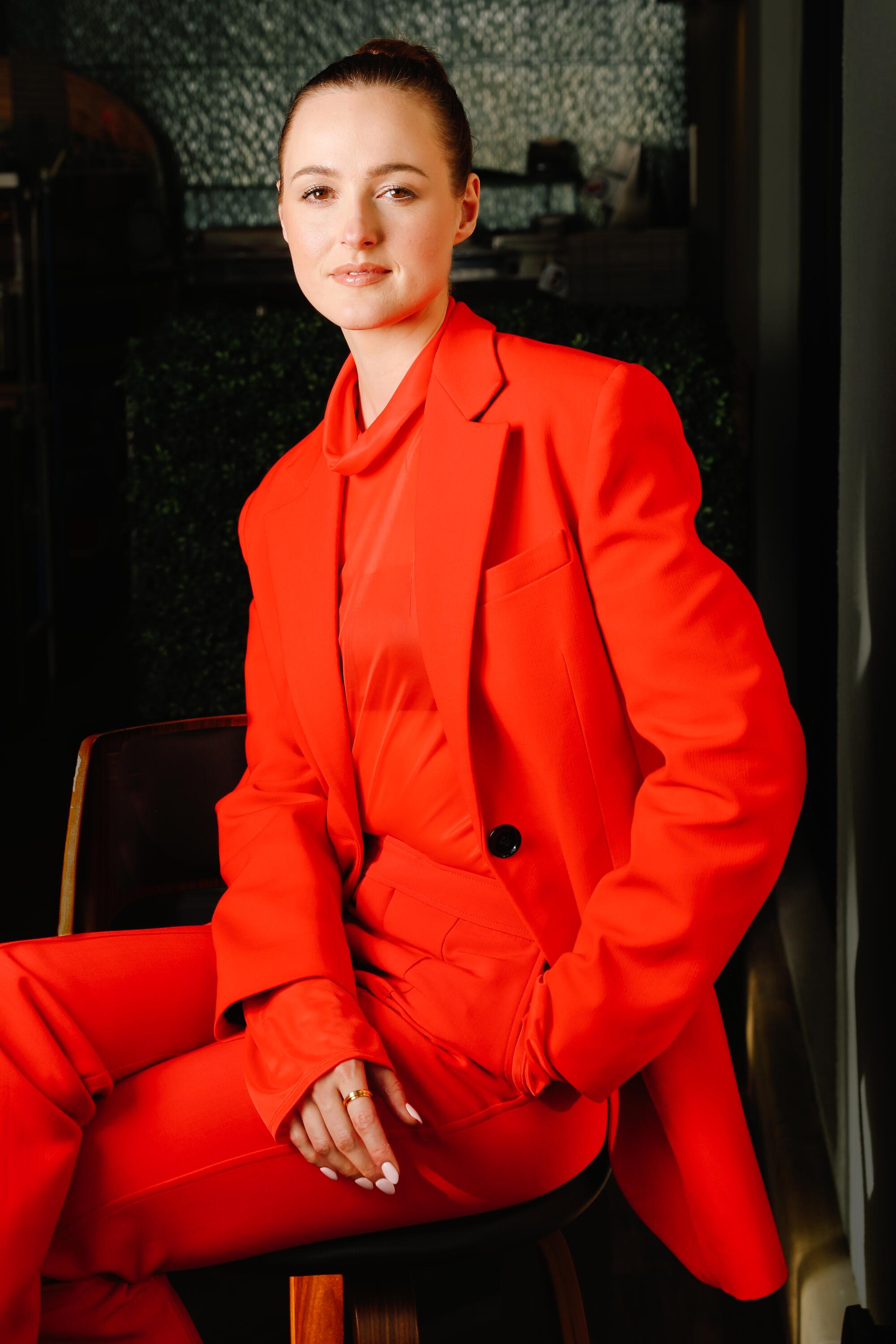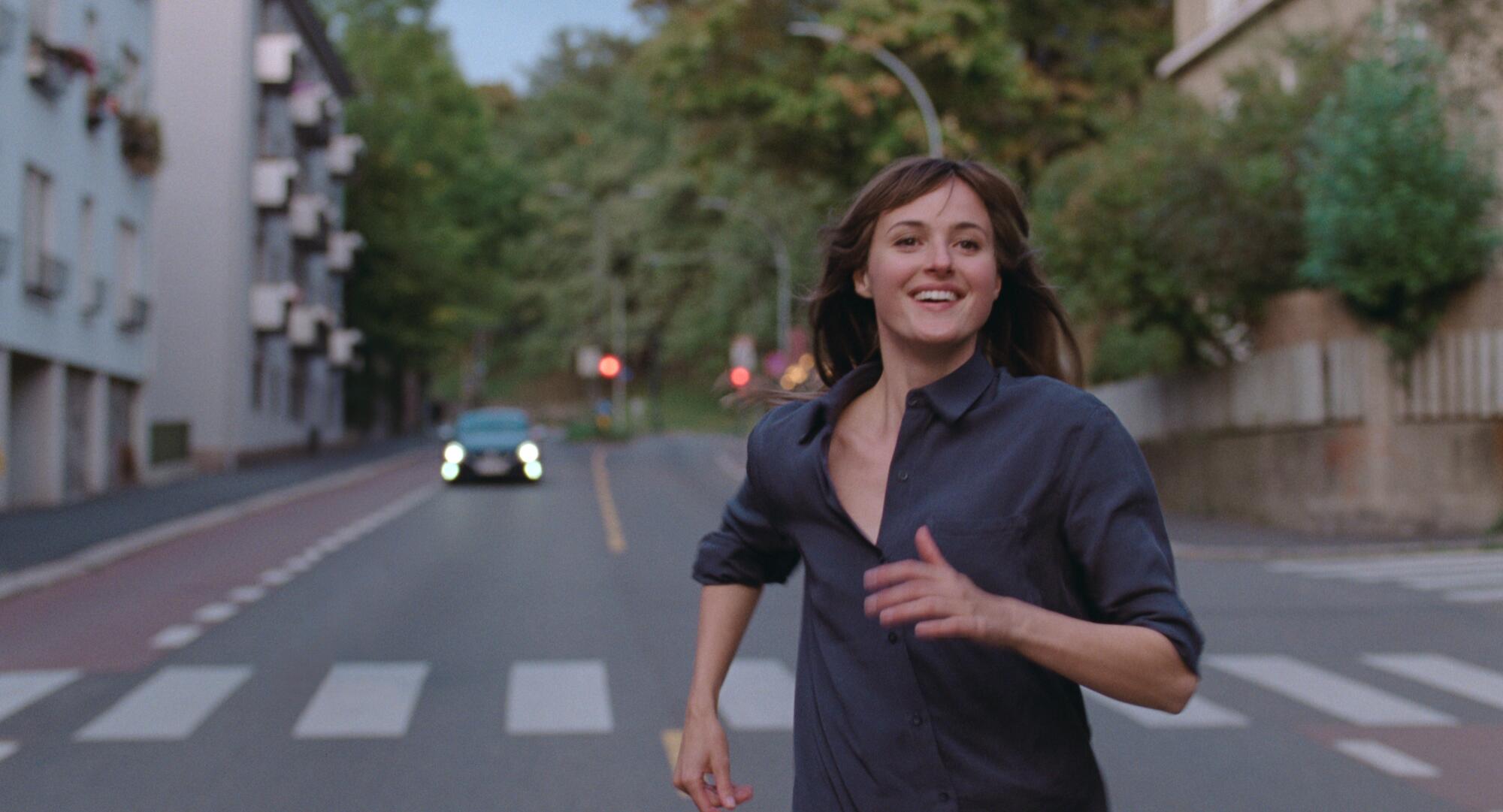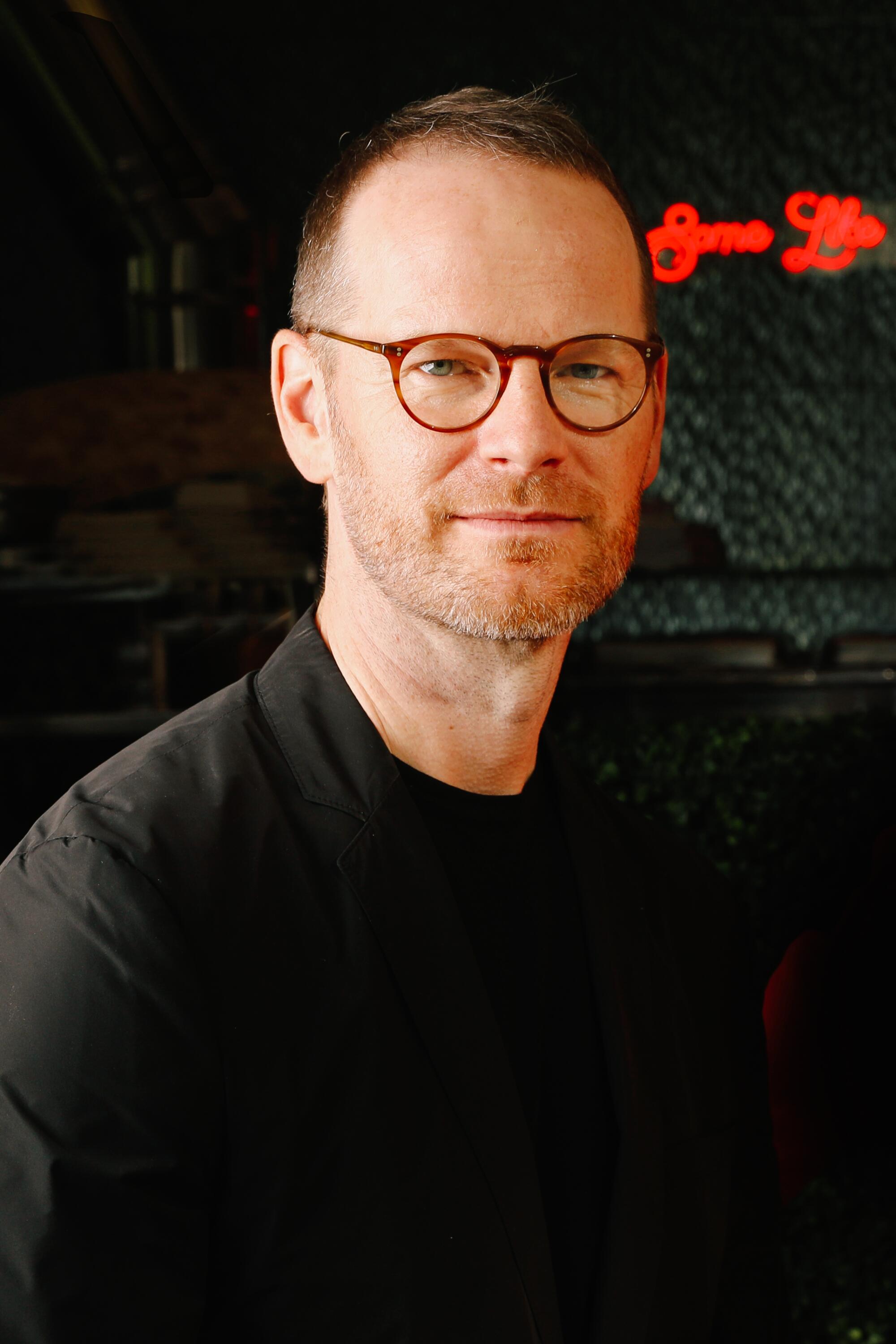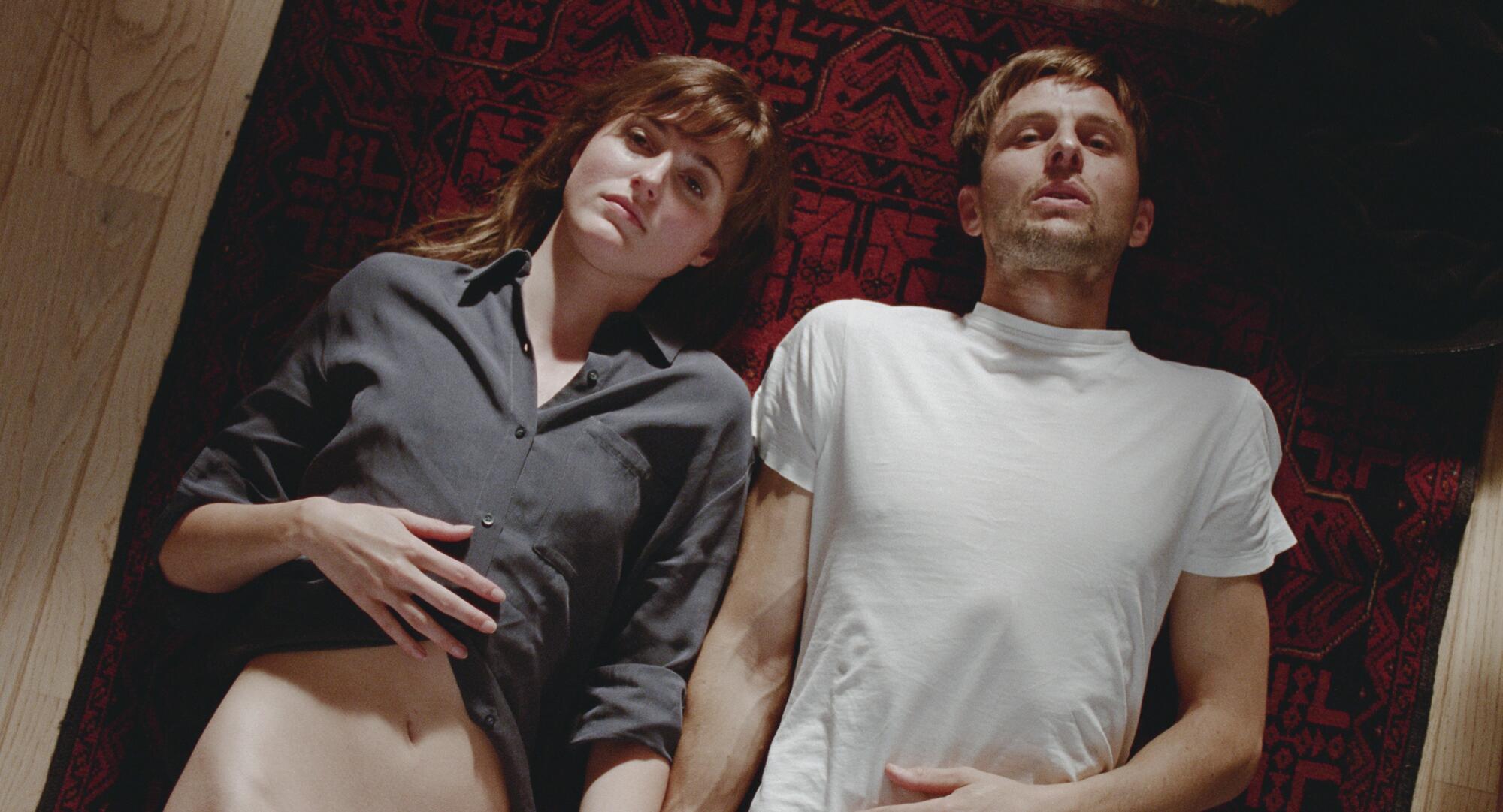- Share via

“The Worst Person in the World” has been one of the best things to happen to actress Renate Reinsve and filmmaker Joachim Trier. The film won Reinsve the best actress prize when it premiered at last year’s Cannes Film Festival and has been joyously received as it continued to play the festival circuit, received a brief qualifying run for the upcoming Academy Awards and earned a spot on many critics’ “best of 2021” lists.
Finally opening for its full-fledged theatrical run this Friday, the film has also been shortlisted for the international feature Oscar, representing Norway (the nominations will be announced Tuesday morning).
The whirlwind of attention around Reinsve in particular has included her signing with CAA as her American agency, international press and awards campaigning, and public praise from numerous celebrity fans including Nancy Meyers, Judd Apatow, Jamie Lee Curtis, Dakota Johnson, Colman Domingo and many others.
“Whirlwind, that’s a very good word for it,” said the 34-year-old Reinsve. “It’s been absolutely overwhelming but so much fun. I worked in the theater for so many years, and there you work holidays, you work nights, you work days. I haven’t traveled that much. So now I get to travel everywhere and meet so many cool people. I should have done this my whole life, but thanks to Joachim, I am doing it now. I’m very glad that it didn’t happen to me when I was 23 because now I can rest in myself and I know who I am and my values and everything. I can take it, but it’s still very overwhelming.”
Reinsve and Trier were sitting together on the patio of a hotel in Beverly Hills during a recent promotional stop in Los Angeles. For as much talking as the two have already done about the film, they enthusiastically share ideas back and forth while answering a journalist’s questions, as if they‘re still discovering new things about their collaboration.

The fifth film directed by Trier and co-written with Eskil Vogt, “The Worst Person in the World” completes a trilogy exploring youth and growing up, following Trier’s directorial debut, 2006’s “Reprise,” and the 2011 follow-up, “Oslo, August 31st.” (Both films starred Anders Danielsen Lie, who also co-stars in “Worst Person.”) Trier made his English-language debut in 2015 with “Louder Than Bombs,” starring Jesse Eisenberg, Gabriel Byrne and Isabelle Huppert, followed by the 2017 queer paranormal thriller “Thelma.”
Though “The Worst Person in the World” found Trier back on familiar territory exploring the lives of young people in Oslo, he was uncertain how it would be received.
“We were so worried,” said the 47-year-old Trier. “To be honest with you, I felt that this film was returning to my roots, looping back those 15 years ago, just trying to be very free in the way I’ve made this film. Free to have time with the actors to explore and free with Eskil and I in the writing room to just have fun. Let’s do cinematic, strange ideas, shoot on 35, see what comes up, play around.
“So when we actually came to Cannes and we hadn’t shown it to more than five people at once and you were in that big screening room of, what is it, 2,300 people, and they actually seem to enjoy it and laughed and cried and gave us an ovation, I was really moved,” he said.
With a title inspired by a self-deprecating Norwegian saying, “The Worst Person in the World” is told in 12 chapters marking a journey of self-discovery for its protagonist, Julie. She quits medical school, moves in with Aksel (Lie), a graphic novelist a bit older than her, and eventually takes up with Eivind (Herbert Nordrum), whom she meets when she crashes a wedding party. All the while, she tries to figure out her professional life — she works in a bookstore and aspires to be a photographer — and manages relationships with her divorced mother and father.
The film’s fluid, energetic style includes showstopping sequences such as Julie imagining her relationship with Aksel going on pause, and the entire city freezing in place along with it, and an uproarious moment in which she has wild hallucinations after eating psychedelic mushrooms with Eivind.

As to why the film seems to be striking a chord with audiences, Trier has a theory.
“I think it’s about the ambivalence,” said Trier. “I might be completely wrong, but we live in a time where we are presented with a lot of quite aggressive opinions. It’s a really tough climate out there right now, in the media and social media, and [in] this film, I’m really trying to be intimate, vulnerable, to talk about a character who is incredibly ambivalent about things, not sure at all. And to show the humanity of that is, I think, a softer way of approaching something and leaving a space for the audience, rather than to get on my soapbox and rant about my strong opinions.
“In a way, I’ve gone a bit against the climate at the moment,” he said. “And I didn’t know whether people would enjoy that, but it seemed at least some people have embraced that side of it.”
“It’s like people really need it,” added Reinsve. “Someone actually really digging deep into what it is to live now and love now. This goes really deep into the nuances of what it is to be a human being today. And I feel like people really appreciate the way you made this movie, and it gets so personal to people. It’s hard to see the time that you’re living while you live in it, but I think Joachim and Eskil writing this movie really captured something.”
“There’s something about Julie,” said Trier. “Without being too academic about this sense of transactionalism, Julie feels she has to prove her value all the time or she has to choose the right thing that will give her the most value in it. She’s trying to find the right guy, the right job, the right identity, and she’s trying to transcend that; her purpose doesn’t have to be measured in any sort of transactional way. And she’s going through all these iterations, trying to adapt to different tastes and who she could be.
“And I think that internal space of self-acceptance, all of us can struggle at times to try to find that space,” continued Trier. “I think we owed it to Julie to take it serious. The journey in this film is about exploring that self-acceptance.”

Reinsve had one line in “Oslo, August 31st,” but the nature of the production meant she was on set for many days. She and Trier had kept in touch, and she had auditioned for him for other projects but had never been quite right for a part. He and Vogt wrote the role of Julie with her in mind.
The day before Trier called to offer Reinsve the role, she had made up her mind to quit acting, thinking she might take up carpentry instead, frustrated after years of work in theater. She had no idea what Trier had been working on and recalled the mix of emotions she felt as she read the script for the first time.
“I was so nervous,” she said. “As an actress because he wanted to write a character who could access both levity and humor, and also tragedy and drama. And I’d done both a lot ... but what if I don’t connect to this role? What if it’s like, ‘This is not me. I cannot do it.’ And I think before page seven, I texted you. The start of the movie then was her sneaking into the wedding. And I was like, ‘OK, I love her.’ I immediately fell in love with her and just started working very hard for a year. I never worked so hard on a character ever.”
When Trier and Vogt began writing, initially Trier was exploring relationships where he had been older than his partner, writing from the perspective of Aksel. That shifted over the course of working on the script.
“I wanted to explore what had I learned retrospectively about that kind of relationship. And then suddenly I realized, ‘Well, she’s a much more interesting character,’” said Trier.
The timeline of the film is open to interpretation, as the chapter breaks form ellipses in the exact passage of time. Trier noted that the film is meant to cover roughly a five- to seven-year span, taking Julie from her late 20s into her early 30s. For Reinsve, depicting that passage of time was only one of the challenges of the role.
“We talked about it very early that her body language and the way she was thinking should be different throughout the years,” she said. “So I was doing a lot of work and analyzing it so it was very clear to me. Because we don’t shoot it chronologically, right, so I had to be very sure that I was in the right body and in the right mindset for where she was ... It’s very small nuanced differences, but for us, it was very specific.”
For all that is upbeat and playful in the film, Trier also knows when to pause and settle in, allowing the gravity of a simple moment to take over, such as when Julie and Aksel have an intense, emotional conversation while sitting in a park on a sunny day.
“I think the biggest drama in my life has happened in very quiet conversations, to take time between people where the level of intimacy or understanding is very high and you access moments that are deeper like that,” said Trier. “I come from Scandinavia, Bergman, Dreyer, looking at a human face like that. There’s a specific artistic possibility on the big screen cinematic experience. You can’t reproduce that in any other format.”
Trier also borrowed a technique favored by American directors such as Apatow and Adam McKay, throwing out alternate lines and ideas while the cameras were still rolling, but doing it for dramatic scenes along with comedic ones. He mentioned the wedding crashing sequence where Julie first meets Eivind and their flirtatious interactions are meant to stop short of cheating on their partners. A scene where they challenge each other to make their ugliest face was cut, but an improvised moment not in the original script where they smell each other’s armpits made it in.
“I think it’s because I do that,” said Reinsve. “I smell people.”
Please explain.
“You can tell if you will have chemistry with someone based on how they smell. It’s a scientific thing,” she said. “But before I read it was a scientific thing, I just did that. It’s fun, though, like, ‘How do you smell?’”
“I think people intuitively, when they see the scene, they get that it’s transgressive,” said Trier. “It also is pushing the limits of what they can do. What charms me at least about smelling someone is it feels very intimate without being explicitly sexual.”
“And it’s not a rule, you haven’t broken anything,” said Reinsve. “If you’re a couple, you said, like, ‘You’re not allowed to kiss anyone,’ but you can’t say, like, ‘You’re not allowed to smell anymore.’ Now it’s going to be a thing after this movie.”
Trier added, “We’re ruining it with this film.”
More to Read
Only good movies
Get the Indie Focus newsletter, Mark Olsen's weekly guide to the world of cinema.
You may occasionally receive promotional content from the Los Angeles Times.











